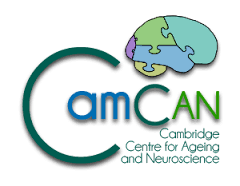CBSU bibliography search
To request a reprint of a CBSU publication, please
click here to send us an email (reprints may not be available for all publications)
Cognitive tasks for driving a brain-computer interfacing system: a pilot study
Authors:
Curran, E., Sykacek, P., Stokes, M., Roberts, S.J., Penney, W., JOHNSRUDE, I. & OWEN, A.M.
Reference:
IEEE Transactions on Neural Systems and Rehabilitation Engineering, 12(1), 48-54
Year of publication:
2004
CBU number:
5829
Abstract:
Objectives: Different cognitive tasks were investigated for use with a 'brain-computer interface' (BCI). The main aim was to evaluate which two of several candidate tasks lead to patterns of electroencephalographic (EEG) activity that could be differentiated most reliably and therefore produce the highest communication rate. An optimal signal processing method was also sought to enhance differentiation of EEG profiles across tasks. Methods: In ten normal subjects (5 male), aged 29-54 years, EEG activity was recorded from 4 channels during cognitive tasks grouped in pairs, performed alternately. Four imagery tasks were: spatial navigation around a familiar environment; auditory imagery of a familiar tune; and right and left motor imagery of opening and closing the hand. Signal processing methodology included auto-regressive (AR) modelling and classification based on logistic regression and a non-linear generative classifier. Results: The highest communication rate was found using the navigation and auditory imagery tasks. In terms of classification performance, and hence possible communication rate, these results were significantly better (p<0.05) than those obtained with the classical pairing of motor tasks involving imaginary movements of the left and right hands. In terms of EEG data analysis, a non-linear classification model provided more robust results than a linear model (p/spl Lt/0.01) and a lower model order than those used in previous work was found to be effective. Conclusions: These findings have implications for establishing appropriate methods to operate BCI systems, particularly for disabled people who may experience difficulty with motor tasks, even motor imagery.

 MRC Cognition and Brain Sciences Unit
MRC Cognition and Brain Sciences Unit

